





Renal colic
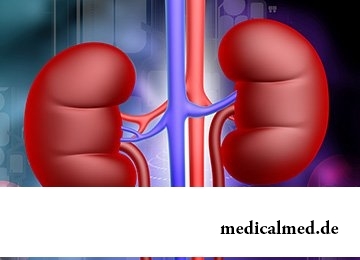 The attack of the acute pain which developed as a result of sudden disturbance of outflow of urine meets at such states:
The attack of the acute pain which developed as a result of sudden disturbance of outflow of urine meets at such states:
- Urolithiasis;
- Nephroptosis with an ureter excess;
- Kidney injury;
- Tuberculosis of a renal pelvis;
- Pyelonephritis: acute and chronic – in an aggravation stage;
- Kidney tumor.
Renal colic most often arises at an urolithiasis. Risk factors for its development are the following reasons:
- Sufferings urolithiasis of blood relatives;
- Loss of liquid in an organism – a condition of an eksikoz;
- The long feverish state which is followed by the increased body temperature;
- Diseases of kidneys: pyelonephritis, infections of urinary channels leading to the cicatricial deformation narrowing urinary tract;
- Errors in food, reception of difficult soluble products or medicines.
Renal colic in clinical practice occurs in 10% at men and in 5% of emergencies of a disease at women. The urolithiasis strikes persons of working-age: from 30 to 50 years. In half of cases the attack of an acute pain repeats after a while, that is, has tendency to a recurrence.
Renal colic, development mechanism
At obstruction of a gleam the concrement or a prelum of an ureter outside break an urine passage. It continues to be produced, but as outflow is broken, accumulates in a renal pelvis, causing swelled kidney tissues. Receptors signal about stretching of pyelocaliceal system, the alarm signal gets into a spinal cord, forming the center of an overstrain of receptors. After a while painful impulses reach a cerebral cortex.
Renal colic, symptoms
Irrespective of an emergence source, the main symptom of any colic – the acute (pricking) pain. At damage of abdominal organs pain arises in a stomach and a waist. When renal colic develops, its symptoms differ from pains at gripes of other localization a little.
The nature of pain at damage of urinary tract:
- Suddenness, regularity, skhvatkoobraznost;
- Rather long duration: of several minutes till 12 o'clock;
- Impossibility to accept such position of a body at which pain ceases.
Renal colic at children is followed by emergence of pains in a navel which are followed by fervescence to 37,5 °C, vomiting and strong fear.
When there is ureteral occlusion at pregnant women, skhvatkoobrazny character imitates the beginning of patrimonial activity, however at the same time the uterus is in a normal tone, but dysuric manifestations are noted: increase of an urination with small amount of the emitted urine.
Depending on the place of ureteral occlusion, renal colic which symptoms indicate anatomic localization of obstruction of urinary tract gives different synalgias. The "travelling" stone stops in places of narrowings of an ureter, and in each case various prevalence of pain is noted:
- The mouth in the field of a renal pelvis – in average area of an abdominal cavity;
- Decussation with arteries of ileal area – the outside surface of a hip and inguinal area;
- The mouth of a bladder – a stomach bottom;
- In a bladder wall – an urethra.
The arisen renal colic has symptoms not only the mentioning urinary system, but also all organism in general. Obstruction of an ureter is often accompanied by the following manifestations:
- Vomiting;
- Paralytic intestinal impassability;
- Dizziness, unconscious state;
- Increase in blood pressure;
- Infrequent pulse.
Contrary to the standard opinion, the hamaturia (availability of blood in urine) appears only when renal colic is allowed. That is, the stone leaves urinary tract. As a rule, the concrement sizes less than 0,5 cm promote independent department together with the coming-out urine. Stones are found in urine in the form of small sand which department is also followed by an acute pain.
When renal colic develops against the background of cancer, the hamaturia arises at once, along with a back pain.
Renal colic, treatment
At specification of the diagnosis by means of inspection of ultrasonography on the portable sensor, patients are subject to the emergency hospitalization in the following cases:
- Lack of effect of therapeutic actions;
- Development of complications;
- Only kidney or simultaneous defeat of two ureters.
If for the first time there is renal colic, treatment is carried out in a hospital. It is necessary for clarification of the reason of pathology of kidneys. When introduction of spasmolysants and anesthetics has positive effect, do not hospitalize the patient, but data on him transfer to policlinic for outpatient observation.
 As Promedolum and its analogs cause strong relaxation owing to which the stone moves ahead on an ureter uncontrolledly, owing to what the volume of operation increases several times, today renal colic is not stopped by narcotic drugs!
As Promedolum and its analogs cause strong relaxation owing to which the stone moves ahead on an ureter uncontrolledly, owing to what the volume of operation increases several times, today renal colic is not stopped by narcotic drugs!
For the purpose of removal of acute pains the medicines blocking the main mediators of pain – prostaglandins are entered. Analgetics of non-narcotic action are for this purpose used.
Renal colic, acute management
For rendering a self-care, but not self-treatment, some recommendations which help to endure pain before arrival of "ambulance" are developed. At pains of weak intensity and precisely known diagnosis of an urolithiasis acceptance of a hot bathtub helps. In the absence of conditions for reception of a bathtub when renal colic begins, acute management is limited to reception of a spasmolysant (Nospanum) and applying of a hot hot-water bottle to a waist.
It is desirable to collect before arrival of the doctor urine for the analysis. Timely conducted laboratory research is so important that often will save life to the patient.
People who got used to have breakfast regularly have obesity much less often.

You are office worker, the driver, the fan of winter sports or do not think of life without bicycle? You conduct a slow-moving image жизн...
Section: Articles about health
Visit of doctors – business not the most pleasant, and many people do not hurry to undergo necessary planned inspections. Such behavior is extremely thoughtless and improvident. Our health is necessary not only to us: wellbeing of darlings, children, grandsons and престар...
Section: Articles about health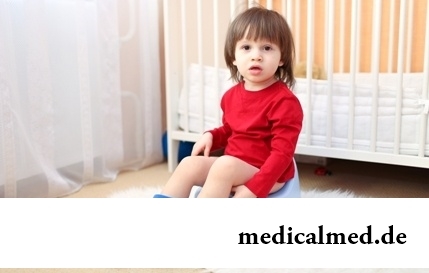
All parents are ready to what the baby often and pisat much. Since then, as the absorbing diapers strongly became current, keeping of the kid in dryness does not represent any problems. But if the grown-up kid continues to urinate in panties, parents begin to feel concern – whether it is normal, or the kid has an urine incontience? Let's try to understand what is enuresis why it arises at children and at what age it is necessary to begin it to treat....
Section: Articles about health
More than a half of the married couples which faced prostatitis – leave. The new broadcast "Female View of Prostatitis" will help to learn...
Section: Articles about health
Smoking not only exerts a negative impact on the state of health of the consumer of tobacco products, but is an air polluter the substances potentially dangerous to people around. In recent years significantly the number of people, стремящ increased...
Section: Articles about health
Each person supports all life a SARS about 200 times. The peak of incidence falls on cold season, but it is possible to get sick with a temperature and a pharyngalgia, and sometimes and very possibly, even during a heat. The reasons for development of catarrhal diseases there is a set: from the weakened immunity till an excess portion of ice cream....
Section: Articles about health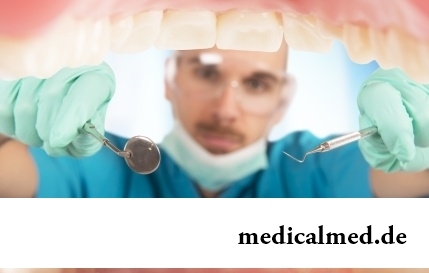
White teeth and the Hollywood smile – a dream of many people. Long time was considered that a plaque on teeth and change of their color – destiny of those...
Section: Articles about health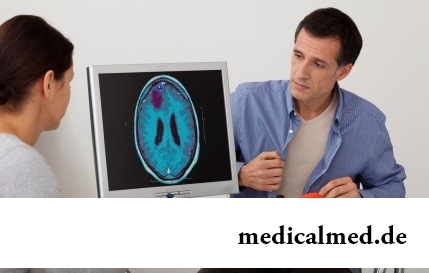
"Epilepsy" doctors made the diagnosis in antique times. Displays of an illness and pattern of its development are very well studied. However for nonspecialists this disease remains to not less mysterious, than in the ancient time. Many delusions are connected with epilepsy...
Section: Articles about health
It seems, quite recently you brought the baby from maternity hospital, but time flew by, and here it is already going to join the first in life children's collective. How to prepare the child for visit of a garden? What needs to teach him to facilitate adaptation process? What to tell and how to behave that the kid transferred changes in the life without serious consequences? Let's try to find answers to these questions....
Section: Articles about health
Within several decades of our compatriots convinced that the use of butter nasty affects on...
Section: Articles about health
Almost each of us during life faced dissatisfaction with own body. At such moments, as a rule, we begin to shame ourselves, urgently we go on the most rigid diet promising minus of 10 kg in a week, or we exhaust ourselves in the gym to полусм...
Section: Articles about health
Not without reason doctors say that 90% of diseases begin or develop because of misoperation of intestines. Disturbance of its functions is connected with various factors among which the important place belongs to excessive "clutter" of an intestinal path. In an organism not only the remains of food, but also mass of harmful substances which we with food accepted accumulate. Accepted to accept, and about that to remove them, did not take care. And in it a problem....
Section: Articles about health
Reactive pancreatitis - the disease which is characterized by inflammatory process in a pancreas which arises more often everything...
Section: Articles about health
Contrary to popular belief, the multiple sclerosis (MS) is not connected neither with sclerous changes of walls of vessels, nor with age forgetfulness and problems with concentration of attention. This disease has the autoimmune nature. Pathological process of a vyrazh...
Section: Articles about health
Each failure in work of bodies and systems of a human body is, as a rule, shown by the whole complex of symptoms. In particular, malfunctions with health often cause emergence of cosmetic defects in the form of rashes on a face. Experienced doctors know that localization of heat-spots usually depends on what disease the patient has....
Section: Articles about health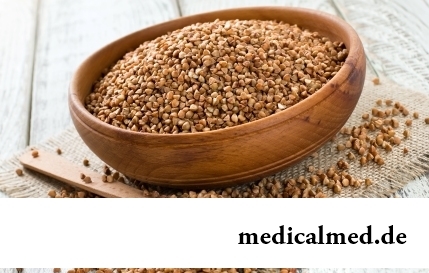
History of cultivation of a buckwheat contains more than five thousand years. Grain which is received from this plant is used for пригото...
Section: Articles about health
Scientists always aimed to offer fundamental explanations for medical problems. Their theories formed the basis of modern methods of treatment of the hardest pathologies and helped to save a set of lives. However stories are known also such theoretical constructions, following to...
Section: Articles about health
All are familiar with cold, and practically everyone believes that he has sufficient knowledge and experience that correctly to treat it. In practice most of people makes mistakes in attempts to get rid of rhinitis, and divides numerous delusions it....
Section: Articles about health
Bathing in broths of medical flowers and plants (phytobathtub) was eurysynusic since Cleopatra who is a good judge of everything...
Section: Articles about health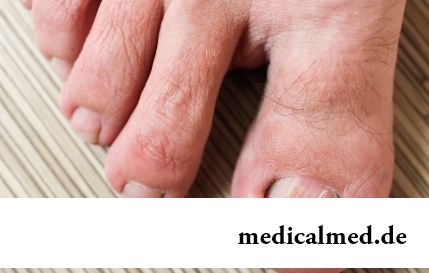
The word "onikhokriptoz" is unfamiliar to most of people, meanwhile quite so physicians call very widespread problem: the growing of edge of a nail into surrounding fabrics causing inflammatory process. Usually the illness affects thumbs of legs, and is followed покр...
Section: Articles about health
Modern footwear is extremely various. It stopped being only protection for legs long ago. Today shoes, boots, barefoot persons choose not so much proceeding from their convenience and functionality how many being guided by outward, brand and an opportunity to add with them a stylish dress. At the same time, buying footwear, think of its safety a little. Meanwhile, many popular models can do essential harm to health....
Section: Articles about health
Doctors claim that the people not so familiar with a dorsodynia occur among adult Russians very seldom. At the same time подавляющ...
Section: Articles about health
There comes the season of issues. Many Russians already dream of outdoor recreation, trips, beautiful seaside beaches. At this time there is no wish to think of problems with health and other unpleasant things, however there are subjects which require attention. Summer...
Section: Articles about health
Work of a brain is extremely complex and in many respects is not studied yet. It is confirmed also by the features of thought processes which are shown when the person sleeps. Let's tell about some of them....
Section: Articles about health
All diseases from nerves – in this joke a big element of truth, are said by doctors. Constant stresses lead body to decrease in protective forces...
Section: Articles about health
The state of health of the person in many respects depends on food. The organism will well function if during food it receive only useful substances, necessary vitamins and microelements. In this case there will be no problems with digestion, with лишн...
Section: Articles about health
For many women the word "fat" sounds as a sentence. In aspiration to an ideal figure they try to exclude, first of all, from the menu all dishes containing fats without having at the same time a clear idea of a role of these substances in exchange processes, and of effects for health with which food restrictions of this sort are fraught. For what the human body needs fats and as their deficit in a diet is shown, we also will try to find out....
Section: Articles about health
